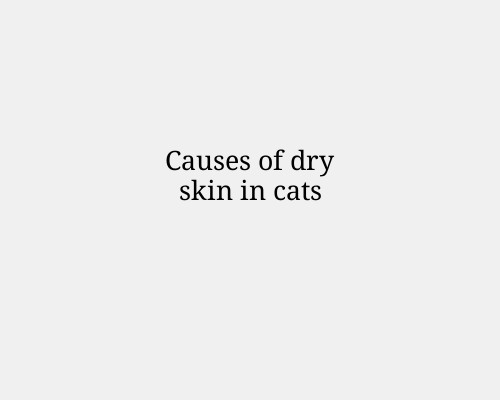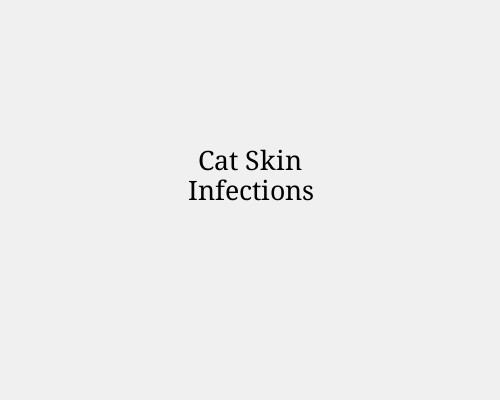Understanding Itchy Skin in Cats
Why Is My Cat Scratching So Much? Understanding Itchy Skin in Cats
Cats are naturally inclined to scratch, but excessive scratching, licking, or biting can indicate an underlying issue. If your cat is scratching more than usual, it’s important to determine the cause and take action. Itchy skin in cats, also known as pruritus, can be caused by a variety of factors, including parasites, allergies, infections, and even stress.
Common Causes of Itchy Skin in Cats
Fleas and Other Parasites
Fleas are one of the most common causes of itching in cats. Even if you don’t see fleas, your cat may still have them, as fleas are excellent at hiding in fur. Some cats are also allergic to flea saliva, causing flea allergy dermatitis (FAD), which leads to severe itching, scabbing, and hair loss.
Other parasites that can cause itching include:
Mites – Ear mites and skin mites can cause intense irritation.
Ticks – Though less common in cats, ticks can still cause localized itching.
Lice – Rare but possible, especially in outdoor or neglected cats.
Allergies
Allergies are another major cause of skin irritation in cats. They can be triggered by:
Food allergies – Certain proteins in a cat’s diet (e.g., chicken, beef, dairy) can lead to itchy skin.
Environmental allergens – Pollen, mold, dust mites, and even household cleaning products can cause allergic reactions.
Contact allergies – Some cats react to materials like plastic, wool, or certain shampoos.
Skin Infections
Bacterial and fungal infections, such as ringworm (a fungal infection, not a worm), can cause excessive scratching and skin inflammation. Open wounds from excessive scratching can also become infected, leading to secondary bacterial infections that worsen the itching.
Dry Skin
Cats with dry skin may scratch more frequently. Dry skin can result from:
Low humidity levels (common in winter)
Poor nutrition (lack of essential fatty acids)
Frequent bathing with harsh shampoos
Dry skin often appears as flaky or dandruff-like patches, especially around the base of the tail and along the spine.
Pain or Discomfort
Scratching or excessive grooming may not always be due to itching—it could be a response to pain. A cat with arthritis or a skin wound may lick or bite at the affected area as a way to soothe discomfort.
Stress and Anxiety
Cats can develop compulsive behaviors like excessive licking or scratching due to stress. Common stressors include:
Changes in routine (moving, new pets, new people)
Lack of environmental enrichment
Separation anxiety
This condition, called psychogenic alopecia, often results in hair loss, especially on the belly, inner thighs, and front legs.
Signs That Your Cat’s Scratching Is a Problem
Occasional scratching is normal, but excessive itching may indicate an issue if you notice:
Bald patches or hair loss
Red, inflamed, or swollen skin
Scabs, sores, or open wounds
Excessive grooming or biting at certain areas
Head shaking (could indicate ear mites or infections)
How to Help Your Itchy Cat
Check for Fleas and Parasites
Use a fine-toothed flea comb to check for fleas and flea dirt (black specks that turn red when wet).
Treat all pets in the household with veterinarian-approved flea preventatives.
Identify Allergens
If food allergies are suspected, try an elimination diet under veterinary supervision.
Minimize exposure to dust, mold, and pollen by keeping your home clean.
Use hypoallergenic bedding and avoid scented litter or sprays.
Improve Skin and Coat Health
Provide a balanced diet rich in omega-3 and omega-6 fatty acids to promote healthy skin.
Use humidifiers during dry months to prevent flaky skin.
Avoid over-bathing, and use mild, cat-friendly shampoos if necessary.
Address Stress-Related Itching
Enrich your cat’s environment with toys, scratching posts, and interactive play.
Establish a consistent routine.
Use feline pheromone diffusers (like Feliway) to help reduce anxiety.
Consult a Veterinarian
If your cat’s itching is persistent or severe, a vet visit is essential. Your vet may perform tests such as:
Skin scrapings to check for mites and infections
Allergy testing
Blood work to rule out underlying health conditions
Conclusion
Excessive scratching in cats is often a sign of an underlying problem, whether it’s fleas, allergies, infections, or stress. By identifying the cause and taking appropriate action, you can help your cat feel more comfortable and prevent further complications. If at-home treatments don’t resolve the issue, consult your vet for a proper diagnosis and treatment plan.







